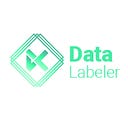Image Segmentation is the Next Big Thing in Data Labeling! Here’s why
One of the most important areas of computer vision & data labelling is image segmentation. It usesboth learning-based and image processing-based algorithms.
Image Segmentation is not only one of the most crucial areas of computer vision & data labeling, but it is also one of the oldest problem statements. The earliest works involved simple region growing methods and optimisation strategies, which were created as early as 1970–1972.
How Data Labeling changed the Image Segmentation Game?
Image segmentation involves both localization and categorization. To determine an object’s location,the model emphasizes the object’s boundary in picture segmentation, a subset of image classification.
Unlike classifiers, which typically use a single encoder network, computer vision picture segmentation models typically use an encoder-decoder network. The encoder transforms the input into a latent space representation, which the decoder transforms into segment maps, or, more precisely, maps indicating the positions of each object in the picture.
Annotation for Image Segmentation
As with all supervised deep learning methods, supervised segmentation techniques need a significant amount of annotated, pre-processed training data.
Depending on the sort of segmentation the model performs, different types of annotations are needed, from very detailed annotations for panoptic segmentation tasks to very basic annotations for semantic segmentation tasks.
For delicate and important use cases like self-driving cars and medical imaging, auto-annotate can quickly generate high-precision segment maps.
How Does AI Image Segmentation Work?
Image Segmentation divides an image into various areas or parts according to how similar the pixels are inside each region of interest. This likeness might stem from many things, including the color, texture, or shape of the object.
Convolutional neural networks (CNNs), fully convolutional networks (FCNs), and transformers are modern sophisticated approaches used in AI picture segmentation to increase task accuracy.
Pre-processing and data collection: A complete set of labeled data is gathered at this stage. Both input and output are present in this kind of dataset.
As a result, the AI system can operate more effectively with hidden images.
Steps to Effective Image Segmentation
Training: The AI system is trained on the relevant dataset during this stage. By establishing a connection between the input and ground truth during training, the system learns patterns and representations.
Testing: After the system has been trained, it is put to the test on a new dataset to assess how well it performs.
Segmentation Generation: If the model works well during testing, it is then put into use in the real world where it builds segmentation masks on the actual images in real time. Also known as the inference phase.
The Major Gains from AI Image Segmentation for Automated Image Analysis
Time-Saving: Because of the inherent features of the item, the manual analysis might take hours or even days while AI algorithms can analyze and segment photos within seconds. This increases the effectiveness of the analysis process and facilitates speedy decision-making.
Cost-Effective: Compared to manual image analysis, AI image segmentation can be more cost-effective because fewer or no human resources are required. As a result, more people can afford and have access to the analytical process.
Safety: The possibility of bias in the training data, which can provide skewed findings, is a prevalent worry. Yet the possibility of inaccuracy can be decreased with precise data labeling and testing.
Robust Application: People frequently grow weary while performing repetitious jobs. The fact that humans’ attention spans are getting shorter over time is another important worry. Inefficiency and subpar performance can be caused by these two elements. Because it was trained on a lot of data and is not fatigued by repetition, AI image segmentation is robust.
With reinforcement learning, these algorithms can also learn from their errors and gradually become more effective. This indicates that they can adjust to various types of images and function well evenunder trying circumstances.
If you’re looking for seamless Image Segmentation and Data Labeling Service .Data Labeler, provides a effective data labeling services that allows companies to focus on their core ML/AI business, while we create the datasets that you need to power your algorithms. Want to know more? Click here
